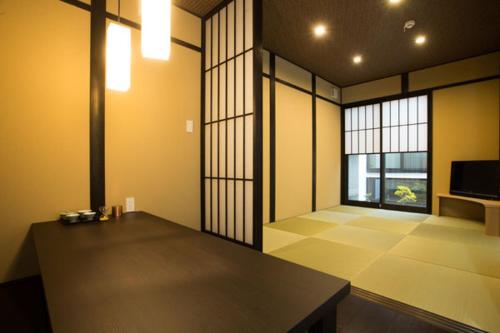Shirayama Shrine
menuMenu
Shirayama Shrine is a serene shrine nestled in the "Momiji-dani" (maple valley) along the Uji River. A highlight is its worship hall, an Important Cultural Property believed to be a remnant of the late Kamakura period's Uji Imperial Villa.






Highlights
- The worship hall, an Important Cultural Property believed to be a remnant of the late Kamakura period's Uji Imperial Villa.
- Known for its vibrant autumn foliage in the fall.
- Conveniently located along the Tokai Nature Trail, making it a perfect stop for hikers.
- An annual autumn festival held on October 18th.
- Lush greenery within the shrine grounds, including *Tsuburaji*, *Shiribukagashi*, and *Kusuno*ki trees.
Basic Information
- Address
- 16-16 Shirakawa Saba-yama, Uji City, Kyoto Prefecture Search for tourist attractions in Kyoto
- Access
- Approximately 40-minute walk from Uji Station on the JR Nara Line. About 3-minute drive from Kyoto Prefectural Route 3, just before the Tenkaze Dam along the Uji River. Show route
- Fee
- Free admission to the temple grounds
Overview
Recommended nearby attractions
Chion-in Temple

Chion-in is the head temple of the Jodo sect, boasting a magnificent gate and a National Treasure Main Hall (Omigedo).
Mukō Jinja Shrine

A serene and beautiful shrine where history and nature harmoniously coexist. Its long approach path and the main hall, designated as an Important Cultural Property, are particularly captivating.
Kennin-ji Temple

Full of highlights, including the national treasure "Wind God and Thunder God" folding screens and the ceiling painting of the two dragons! Don't miss the serene garden where you can feel the spirit of Zen.
Myoshin-ji Keishun-in

A tranquil space known for its beautiful garden of maple leaves and moss.
Kami-Daigo

Kami-Daigo: the birthplace of Daigo-ji Temple.
Experience the rich nature and history,
and spend a peaceful time.
Ishi清水八幡宮 Shrine

Ishi清水八幡宮 is a historic shrine founded in the 9th century, offering stunning views from its verdant hilltop location.
Higashiyama Jisho-ji Temple

The beautiful sight of the Kannon-den hall, known as the "Silver Pavilion," and the serene gardens featuring the white sand "Ginshadan" and "Komyatsu-dai" will soothe your soul.
Saisho-ba Omotomiya Shrine

A shrine located on the former grounds of Saishoji Temple, a temple with imperial connections. The serene atmosphere of the grounds evokes a sense of history, offering a tranquil escape.
Kourin-in Temple

Kourin-in Temple captivates visitors with its stunning main hall showcasing Muromachi-period architecture and a serene karesansui (dry landscape) garden. Experience a moment of tranquility surrounded by history and nature.
Nearby Hotels
Kyoto Uji Hanayashiki Ukifune-en

Aiso

Kyoto Uji Cha-gan-ju-tei House

Hotel Trend JR Uji Ekimae

Tabibitoyado Kirinya Hostel in Uji

Uji-Ichibanyado-Nigauri

Komorebinoyie

Uji Tea Inn

Hotel Sweet ( - Adult Only )

KYOMACHIYA Higurashi - Japanese modern House

